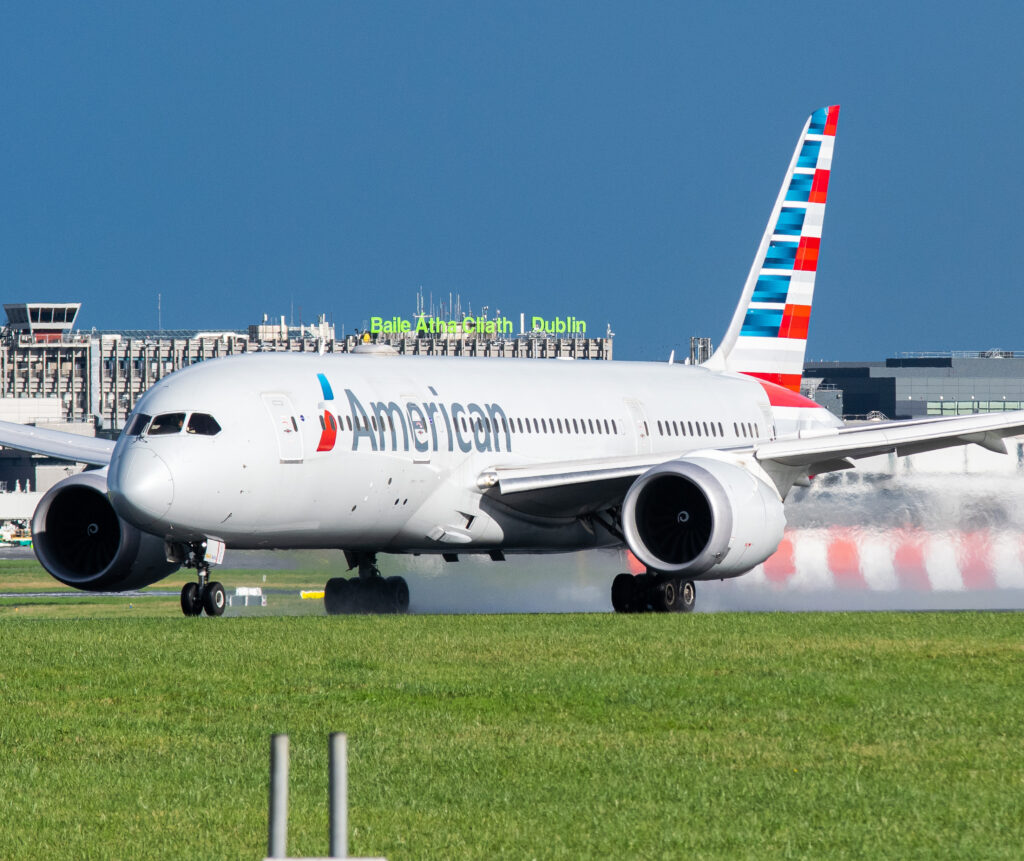From starting as a mail carrier service in the 1930s, American Airlines has grown into one of the largest and most recognizable airlines.
With a rich history spanning nearly a century, this airline has seen it all – from pioneering new routes to weathering economic downturns and global crises.

In this article, we’ll take you on a journey through the fascinating history of American Airlines, exploring how it became an aviation industry powerhouse and what challenges it faced along the way. So, fasten your seatbelts, sit back, and let’s take flight!
American Airlines: The Early Years
American Airlines was founded in 1926 as a merger two several smaller organizations, Robertson Aircraft Corporation, and Colonial Air Transport. The company has since grown to become one of the largest airlines in the world, with over 4,800 flights per day to 350 destinations in nearly 50 countries.
The airline has come a long way since its humble beginnings, and it continues to innovate and evolve to meet the needs of its passengers. American Airlines is committed to providing safe, comfortable, and reliable service, and it looks forward to continuing to serve its customers for many years to come.
The Expansion Years
Following the end of World War II, American Airlines experienced a period of rapid growth. Thanks to the GI Bill, which provided veterans with funding for education and training, many former servicemen were able to join the airline’s ranks as pilots, mechanics, and other personnel. The company also benefited from the post-war boom in air travel, as more and more people were taking to the skies for business and leisure.
During this time, American Airlines expanded its route network to include many destinations across the United States, as well as many international destinations in Europe, Asia, and Latin America. The airline also began operating larger aircraft to accommodate the growing demand for air travel. In order to keep up with its competitors, American Airlines invested heavily in new technologies such as radar-controlled landings and jet engine powered aircraft.
By the early 1960s, American Airlines was one of the most powerful airlines in the world. Thanks to its strong financial position and modern fleet of aircraft, the company was able to weather the turbulence of the decade without too much difficulty.
However, rising fuel costs and increased competition from other airlines led to a decline in profits during the 1970s. In response, American Airlines embarked on a major cost-cutting program that included reducing its workforce and selling off some of its assets.
Despite these challenges, American Airlines remained one of the leading airlines in terms of passenger traffic and profitability throughout the 1980s and 1990s leading all the way into the 21st Century.
The Deregulation Era
[monsterinsights_popular_posts_inline]
The airline industry in the United States has undergone several major changes since its inception in the early 1900s. One of the most significant periods of change was during the deregulation era, which began in 1978 and lasted for several years.
During this time, the government removed many of the regulations that had previously governed the airline industry, resulting in a more competitive market as well as giving airlines the ability to set their own fares.
This period of deregulation saw a number of major changes in the airline industry. One of the most significant was the introduction of low-cost carriers, such as Southwest Airlines and JetBlue. These airlines offered lower fares than their traditional counterparts, which helped to increase competition and drive down prices for consumers.
Another significant change that took place during this period was the ability for airlines to begin flying to new destinations without prior approval from the government. This resulted in a dramatic expansion of service by many airlines and led to an increase in domestic and international travel options for passengers.
In addition to these changes, deregulation also resulted in increased mergers and acquisitions within the airline industry. Many small airlines were bought up by larger carriers, which helped to consolidate the industry and create a handful of large companies that dominate the market today.
The Modern Era
In the late 1990s, American Airlines embarked on a journey to modernize its operation. The goal was to become the airline of choice for business travelers and to create an experience that was more comfortable and convenient.
To do this, American invested billions of dollars in upgrading its fleet, renovating its airport terminals, and introducing new customer-focused initiatives such as self-service check-in kiosks and e-ticketing.
Today, American is a global airline leader, serving more than 350 destinations in 50 countries around the world. And while the company has faced challenges in recent years, it remains committed to providing its customers with a safe, reliable, and comfortable travel experience.
American Airlines Today
Today, American Airlines is a major global carrier, operating one of the youngest fleets in the industry. The airline has continued to invest in its product and services, as well as like most airlines recently, beginning to take on SAF (Sustainable Aviation Fuel) in order to drive down their carbon emissions.
In the face of challenges from low-cost carriers and legacy airlines alike, American Airlines has remained a powerful force in the aviation industry. With its fleet of modern aircraft and extensive global route network, American Airlines is well positioned for continued success in the years to come.









